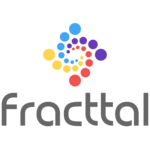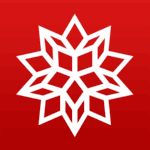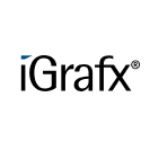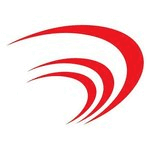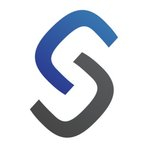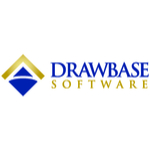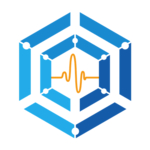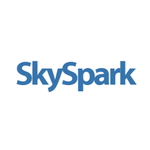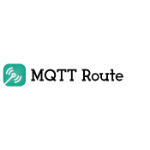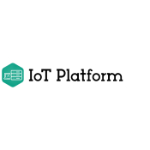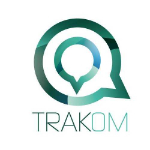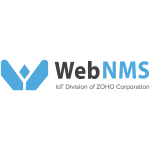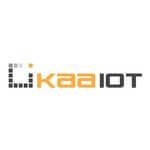TechnologyCounter provides genuine, unbiased real user reviews to help buyers make informed decisions. We may earn a referral fee when you purchase through our links, at no extra cost to you.
List of 15 Best IoT software
Showing 1 - 15 of 64 productsBlynk is a platform for creating smart and connected devices without any coding experience. With its user-friendly interface and vast library of customizable widgets, Blynk allows users to create and control their own Internet of Things projects. Ele...Read Blynk Reviews
Dell Boomi is a highly versatile and innovative software that connects various business applications, systems, and processes, making it easier for organizations to automate and streamline their operations. With its cloud-based integration platform, D...Read Dell Boomi Reviews
Fracttal is a maintenance and asset management solution designed to streamline your organizations operations. With Fracttals intuitive interface features, you can optimize maintenance processes, increase asset reliability, and drive significant cost...Read Fracttal Reviews
Wolfram Mathematica is the dynamic software that revolutionizes the way mathematical and scientific computations are performed. With its unparalleled versatility and powerful computational abilities, Mathematica is a tool for professionals and studen...Read Wolfram Mathematica Reviews
iGrafx empowers businesses to succeed in the digital era by providing powerful process management solutions. With its user-friendly interface features, iGrafx helps companies streamline their operations and optimize their productivity. Whether its pr...Read iGrafx Reviews
Applicare is a solution for all your business needs. Designed with precision and expertise, Applicare streamlines your processes and enhances your productivity. Say goodbye to the hassle of manual tasks and hello to efficiency, thanks to Applicares a...Read Applicare Reviews
SpinalTwin is a software designed to transform the way spinal surgeons plan and execute procedures. With its advanced technology and user-friendly interface, SpinalTwin is set to streamline and enhance the precision and efficiency of surgeries, ultim...Read SpinalTwin Reviews
Drawbase - your ultimate solution for all your drawing and design needs. With its user-friendly interface features, Drawbase will take your creativity to the next level. Whether youre a professional artist or a beginner, this software has everything...Read Drawbase Reviews
CYBEATS is a software designed to protect your devices from digital threats. This innovative platform utilizes advanced technology to detect and prevent cyber attacks, keeping your data safe and secure. With CYBEATS, you can stay one step ahead of po...Read CYBEATS Reviews
SkySpark is an intelligent software that harnesses the power of data analytics to optimize building performance and energy efficiency. With its advanced algorithms and real-time monitoring, SkySpark helps businesses and organizations make informed de...Read SkySpark Reviews
MQTTRoute is a solution for efficient message routing. Designed to streamline communication between devices and applications, MQTTRoute offers a seamless and secure solution for MQTT-based messaging. With its advanced features and user-friendly inter...Read MQTTRoute Reviews
Bevywise IoT is a software designed to streamline the world of Internet of Things. With its unparalleled features and intelligent solutions, Bevywise empowers businesses to harness the full potential of IoT technology, making it an indispensable tool...Read Bevywise IoT Reviews
Trakom - Asti is a software designed to streamline and optimize business operations. Leveraging advanced technology features, Trakom - Asti offers a seamless is a management system for various industries. From inventory management to customer relatio...Read Trakom - Asti Reviews
WebNMS is a network management software that offers innovative solutions for effectively managing and monitoring network equipment and resources. With its user-friendly interface features, WebNMS helps organizations streamline their network operation...Read WebNMS Reviews
Kaa is a software designed to revolutionize the way businesses approach IoT solutions. With its advanced features and user-friendly interface, Kaa simplifies the development and deployment of connected devices. Say goodbye to complex coding and hello...Read Kaa Reviews
- What Is IoT Software?
- Top Reasons Why Businesses Need IoT Software?
- What Are the Top Key Features of IoT Software?
- What Are the Top Benefits of IoT Software?
- What Are the Steps to Choose the Right IoT Software?
- What are the Types of IoT software for different industries?
- What Are the Technology Trends for Best IoT Software?
- What Are the Deployment Options for IoT Software?
What Is IoT Software?
IoT Software is a sort of technology that aids in the management and monitoring of Internet of Things (IoT) devices. The word "IoT" refers to any physical thing that can be connected to a network such as the Internet. The IoT application software enables users to control and manage these networked devices. It can, for example, track the whereabouts of an automobile or monitor temperatures in a factory.
Users can also use this software to get real-time data from linked devices and use it to make decisions. IoT management software can also be used to detect irregularities in device performance. For example, if a linked device is not operating as planned, the software can immediately send out an alert to tell users.
Finally, an IoT software platform is a necessary tool for managing and monitoring Internet of Things (IoT) devices. It collects real-time data from connected devices and can detect and notify users of any irregularities.
Top Reasons Why Businesses Need IoT Software?
1. Advanced Automation: Certain jobs can be automated with IoT software solutions, lowering the amount of redundant work and enhancing efficiency.
2. Predictive analytics: Predictive analytics can help firms anticipate client requirements and future occurrences, allowing them to make more educated decisions.
3. Real-time data collection: Businesses can gather data about their operations and find opportunities for improvement via real-time data collecting.
4. Improved Customer Experience: IoT software platform has the potential to create a more personalized client experience.
5. Increased Connectivity: The IoT application software allows objects to connect to the internet, enabling for data-driven decisions and speedier response times.
6. Automated Billing: Businesses can simply track and charge customers accurately and on time using automated billing solutions.
7. Lower Cost: IoT management software is less expensive than traditional software, allowing organizations to save money over time.
8. Improved Security: IoT based software can assist enterprises in protecting themselves from cyber attacks and providing a secure, dependable network.
9. Scalability: Businesses can quickly adjust to changing market conditions due to the flexibility and scalability of IoT software solutions.
10. Enhanced Productivity: Businesses can easily control operations with IoT software, enhancing efficiency.
11. Easy Maintenance: The IoT software platform is simple to maintain, allowing organizations to monitor system utilization and make modifications as needed.
12. Improved Forecasting: Predictive analytics can help businesses obtain insights into future patterns and make the necessary changes ahead of time.
13. Increased Efficiency: Businesses can use IoT management software to optimize and automate processes in order to save money and increase efficiency.
14. Remote Monitoring: With remote monitoring, businesses may watch activities from any place, allowing them to respond rapidly to changing conditions.
15. Natural Language Processing: To converse with devices, natural language processing can be used. This reduces the requirement for human involvement while also simplifying the user experience.
What Are the Top Key Features of IoT Software?
1. Remote Monitoring: IDevices can be monitored with oT software from anywhere with a secure connection. This allows for quick responses to any problems or changes in usage.
2. Security: To protect device integrity and prevent unwanted access, IoT based software must include security features. It should also have robust authentication procedures to safeguard user data.
3. Scalability: Data from millions of devices should be handled by IoT software. This is particularly useful for real-time analytics and monitoring of many devices.
4. Automation: IoT-based software should be able to automate simple operations or allow for the creation of complicated rules to govern how devices interact with one another. Automation lowers the need for manual involvement in routine tasks.
5. Connectivity: The IoT software platform should be able to integrate with existing enterprise systems and handle different connectivity protocols.
6. Flexibility: The IoT application software should be versatile enough to accept a wide range of technologies, allowing data from several sources to be ingested, reviewed, and acted upon.
7. Visualization: IoT management software should include user-friendly graphics for quickly identifying trends or abnormalities in data.
8. Integration: IoT based software should allow device data to be integrated with current business systems and analytics tools. This allows for greater in-depth data analysis and decision-making.
What Are the Top Benefits of IoT Software?
1. Improved product efficiency and performance: Organizations can utilize IoT software to get real-time data from their connected devices, which can be used to improve product performance and reduce downtime.
2. Automated maintenance: Organizations can utilize IoT software solutions to get real-time data from their connected devices, which can be used to improve product performance and reduce downtime.
3. Increased customer engagement: IoT software platforms can be utilized to deliver personalized, interactive experiences that bring value to clients.
4. Enhanced security: Because IoT networks can communicate with one another and execute predefined orders, they may be programmed to detect and guard against hacking and other cyber threats.
5. Improved scalability: Organizations may quickly and easily extend their systems to accommodate bigger volumes of data using the best IoT software, resulting in speedier decision-making and improved business outcomes.
6. Lower operating costs: Many of the manual activities typically connected with business management are automated by IoT software solutions, resulting in cost savings.
7. Enhanced visibility: Organizations can use the best IoT software to track the performance of their products and services in real-time, allowing them to identify areas for development.
8. Increased collaboration: Organizations may efficiently collaborate across departments and geographies to achieve their goals by adopting the same IoT software platform.
What Are the Steps to Choose the Right IoT Software?
1. Identify and analyze your business requirements: To design the best software for your specific business demands, you must first examine them and identify which functions and features are required. Consider both short-term and long-term goals while compiling a list of requirements.
2. Select the right technology: You must ensure that the software you select is compatible with your company's existing technology. Make certain that the platform you select is secure, stable, and capable of supporting any future apps or features that your company may demand.
3. Know the cost: Know how much you can afford to spend and how the software's features will effect the cost. There are various pricing models available, so be aware of these before making your decision.
4. Choose the right vendor: Before making a decision, examine the software suppliers and ensure they have a good track record and are skilled in developing for the IoT platform you've chosen.
5. Compatibility testing: Check if the best IoT software is compatible with your existing corporate technologies. Perform support tests, compatibility checks, and even user acceptability tests to ensure that everything functions as it should.
6. Create a timeline: Create a timeline based on the project plan and milestones to ensure the software is delivered successfully.
7. Installation and maintenance: Make sure the installation goes well and that you provide regular maintenance and upgrades to keep the program running properly and securely.
8. Documentation: Create and distribute user-friendly documentation on how to use and maintain the IoT platform to guarantee that users can take advantage of the capabilities and make the most of the program.
What are the Types of IoT software for different industries?
The types of IoT software used in various sectors vary depending on the industry and the application's specific requirements. In general, IoT software is classified into five major groups.
1. Mobile Applications: These applications operate on mobile smartphones or tablets and allow users to access their device's IoT functionalities. Fitness tracking apps, smart home applications, and home automation apps are a few examples.
2. Cloud Software: Cloud-based software enables secure data storage in an online environment. This could entail storing data on remote servers or enabling IoT functionalities and connection with different devices. Software used for remote device monitoring and administration, as well as data analysis and analytics, are examples.
3. Data Aggregation and Processing Software: To collect, aggregate, and analyze data from many sources, data aggregation and processing software is employed. This software can produce business insights, improve customer experience, and give enterprises and end-users with real-time information.
4. System Integration Software: Systems integration software is used to connect various systems within a company. This promotes data sharing, communications, and other internal operations. Middleware, enterprise service bus, and message broker software are examples of systems integration software.
5. Security Software: In an IoT setting, security software is employed to protect data, systems, and communication. Data privacy, application authentication, network security, data encryption, and other security features can be provided by this program.
What Are the Technology Trends for Best IoT Software?
The technology trends for best iot software are:
1. Cloud Computing: Cloud computing provides the most effective and quick platform for data analysis, storage, and transport. This aids in scalability, decreasing resource fatigue, and enhancing efficiency in IoT application deployment.
2. Artificial Intelligence: AI enables IoT devices to become self-sufficient and interacts with various systems to make automated judgments. This enables gadgets to make decisions based on the requirements and preferences of the user.
3. Machine-to-machine (M2M) connectivity: M2M is an effective communication channel for devices since it allows information to be shared between devices without the need for user intervention. This increases data collection efficiency.
4. 5G Wireless Network: 5G wireless networks provide quicker and more efficient data transport as well as faster IoT device connectivity. This improves the efficiency with which IoT applications are used.
5. Edge Computing: Edge computing lowers latency and improves communication among networked devices. This contributes to the smooth running of IoT applications.
What Are the Deployment Options for IoT Software?
The deployment options for IOT software are determined by the size of the project and the aims of the firm. There are three primary types of deployments:
1. On-premises deployment – This is the process of installing and running software on the company's local IT infrastructure. This deployment is best suited for firms that have a dedicated IT staff and onsite hardware.
2. Cloud deployment – When software is hosted in the cloud and accessible via the internet. This solution is frequently the simplest to execute because businesses do not need to manage and maintain hardware.
3. Hybrid deployment – This is when on-premises and cloud deployment are used in tandem. It enables businesses to benefit from both local resources and the scalability and flexibility of the cloud.


